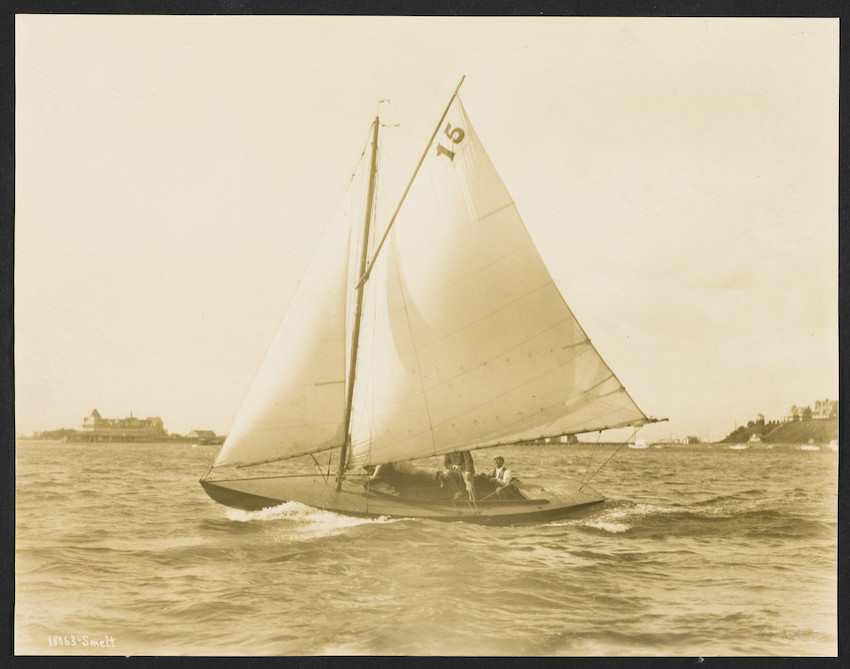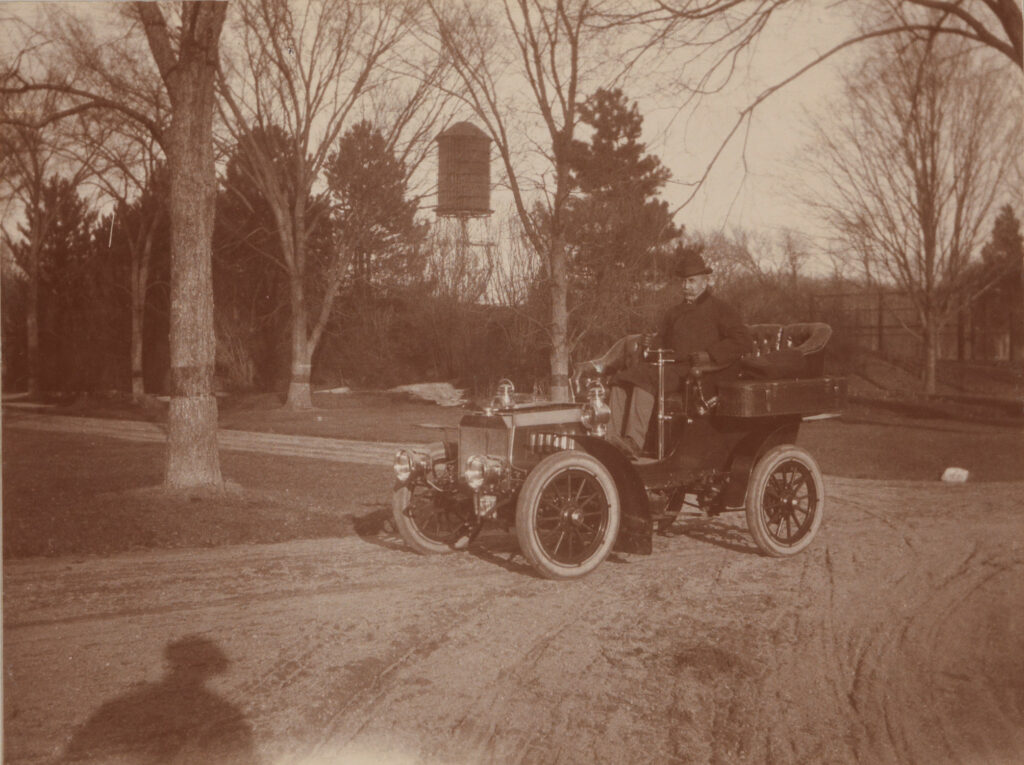 Eustis Estate
Eustis Estate
The Library

The man cave
The library, perched over the porte cochère, was the private space of W.E.C. Eustis. It housed a large collection of books and souvenirs from his travels and served as his home office, where he managed his personal affairs.
W.E.C. graduated from Harvard University with a Bachelor of Arts in 1871. He completed a second degree in science two years later. While in school, Eustis was a member of the Harvard Nines baseball team and played a total of 101 games during his time there.


W.E.C. Eustis was listed as a “metallurgical engineer” in the 1880 U.S. Census. He found great success in his work as an engineer and owned three companies across North America: Eustis Mining Company in Quebec, Melones Mining Company in California, and the Virginia Smelting Company in Virginia. He also patented several chemical metallurgy and mechanical inventions.

His interests and pursuits in engineering and technology migrated into his personal life, as well. A staircase hidden behind the velvet curtain in this room leads to a third-floor room he called his “laboratory,” which once housed his “tinkering room” where he worked on devices such as radios and other new technology.
W.E.C. was also an avid photographer and had a dark room in the basement. Many of the historic photos seen here are from the glass plate negatives that he took during the 1880s and 1890s.
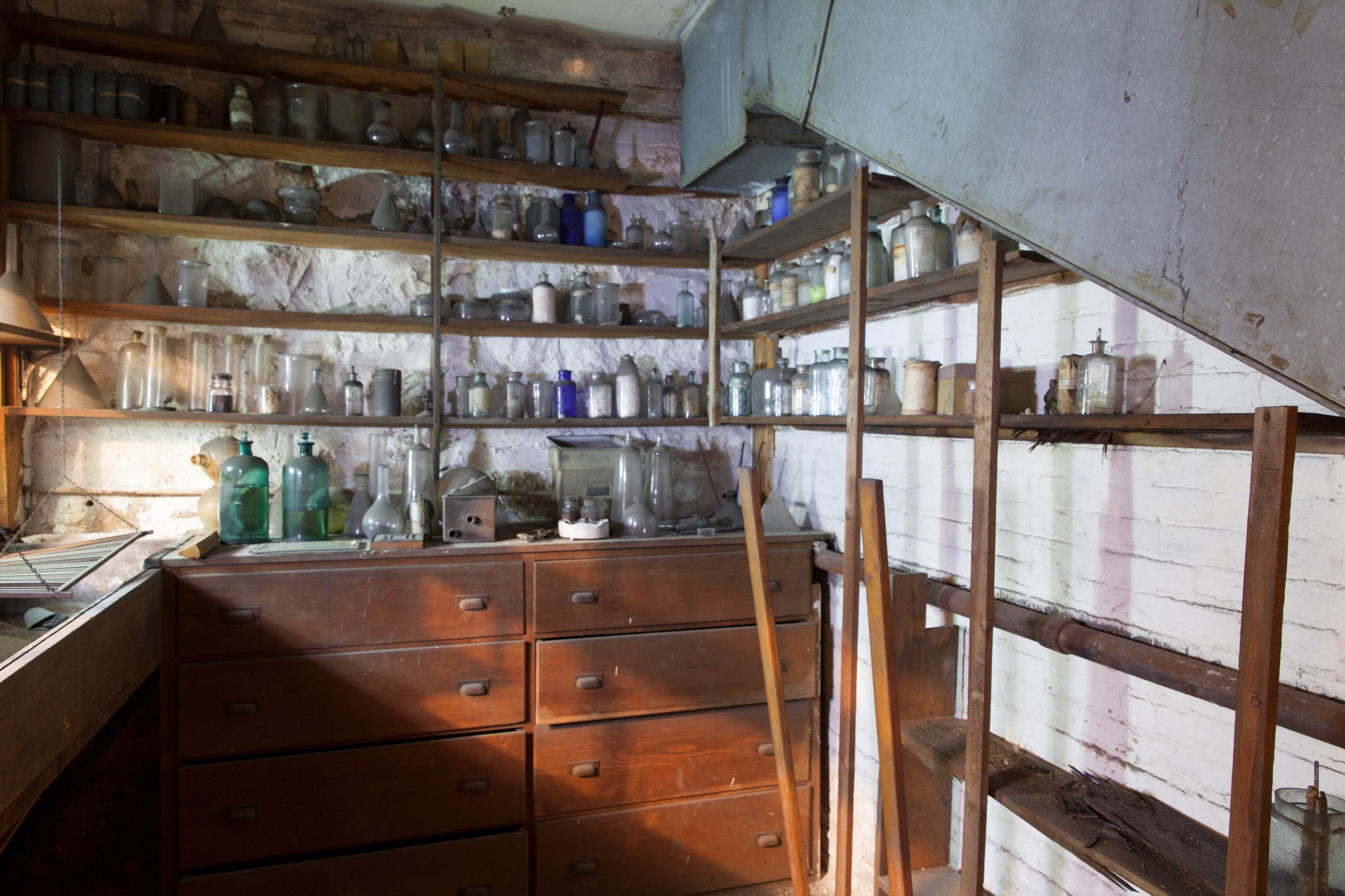
An avid yachtsman
sailing near Cape CodAn avid yachtsman
W.E.C. was an avid yachtsman who enjoyed sailing near Cape Cod. In 1894 Edith paid to have a summer home built in Cataumet, overlooking Buzzard’s Bay. In the Summer Social Register of 1919 W.E.C. Eustis was listed as the owner of three vessels, the Smelt, the Squid, and the Vega. In the winter months he traveled to the Canaveral Club in Florida where he hunted and fished. Several of his trophy animals were displayed in the Milton house, including a large sailfish in the library and a blue heron that was placed on the staircase overlooking the first floor hall.
A Working Estate
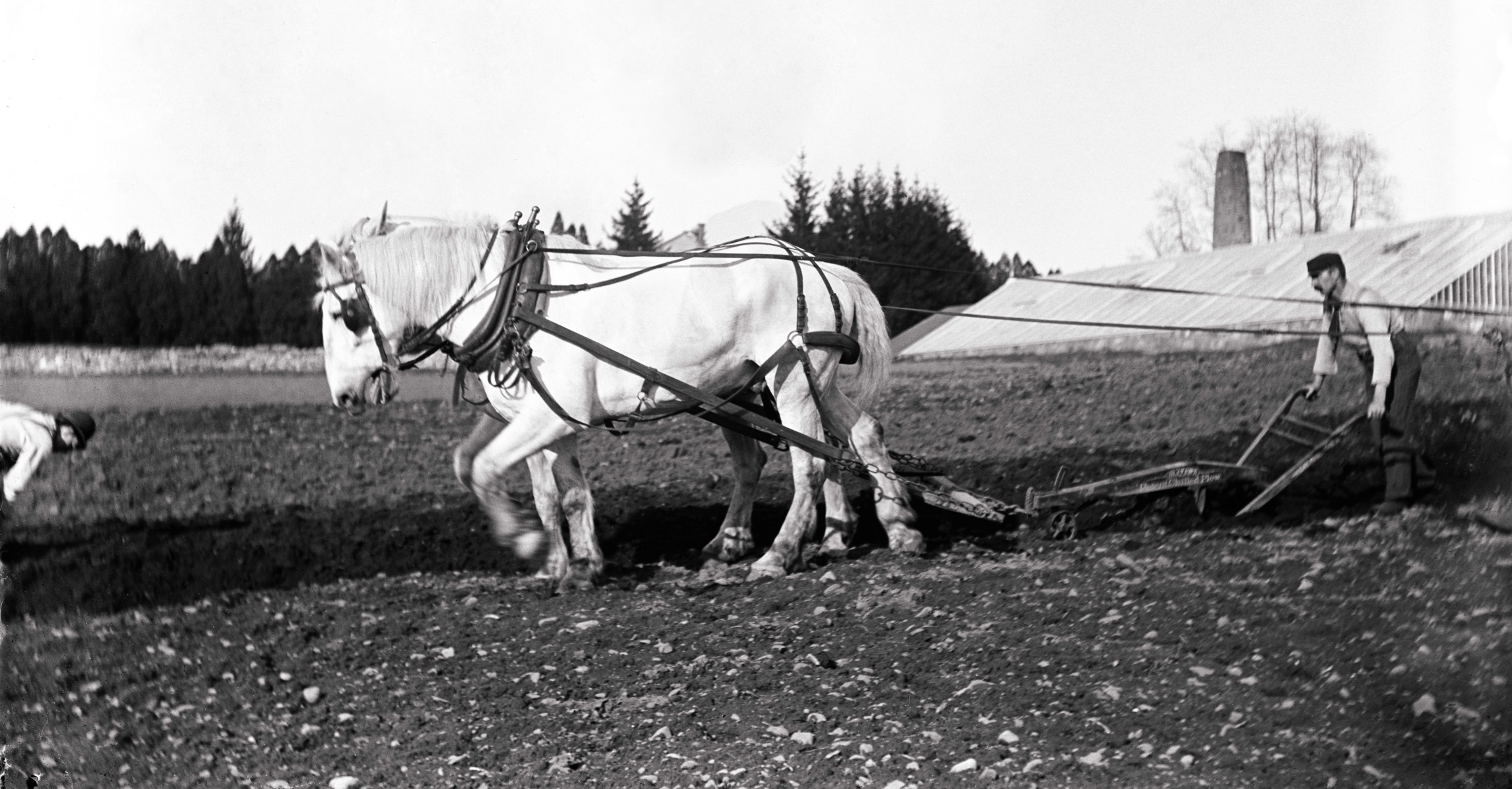
Aside from his professional work and personal hobbies, W.E.C. Eustis was interested in managing his Milton estate as a working farm. Most of the open land was cultivated, tended by a farm manager and a staff of gardeners and laborers. A large greenhouse was built on the property in the early 1890s and the boiler house behind it still stands.
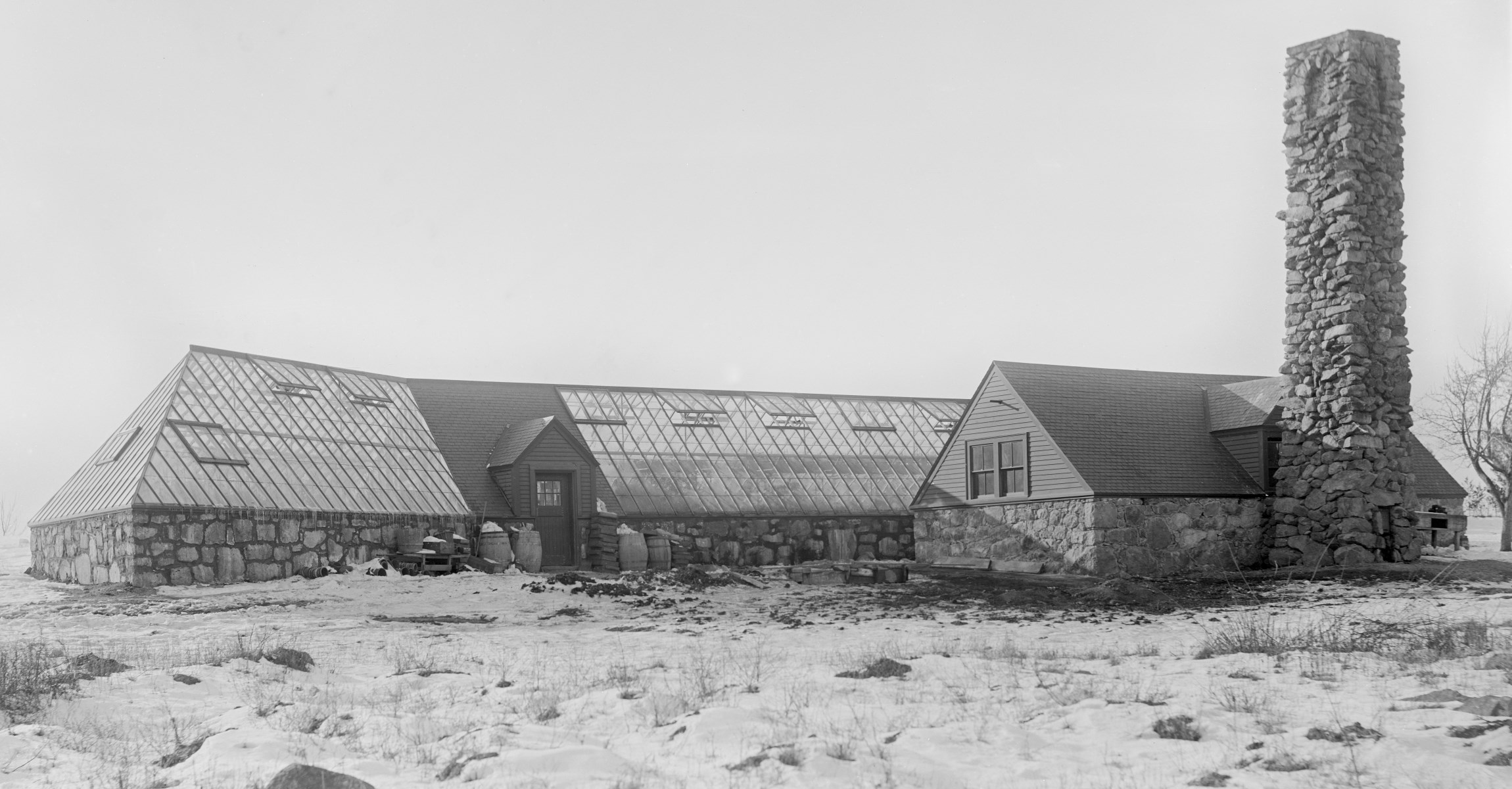
The Eustises also created a small pond so that ice could be harvested during the winter. A wooden structure was built along the shore of the pond where ice could be stored.

In 1902 W.E.C. built a fieldstone power house near the pond. One hundred seventy-five feet above it stood a large wind turbine that powered a generator inside. This electricity was first wired to the library and eventually to the rest of the house. According to family lore, even after the entire house was connected to municipal power, W.E.C. kept the library hooked up to the on-site power source, which he believed to be more reliable. As a result, the library never lost electricity when the rest of the main house did.
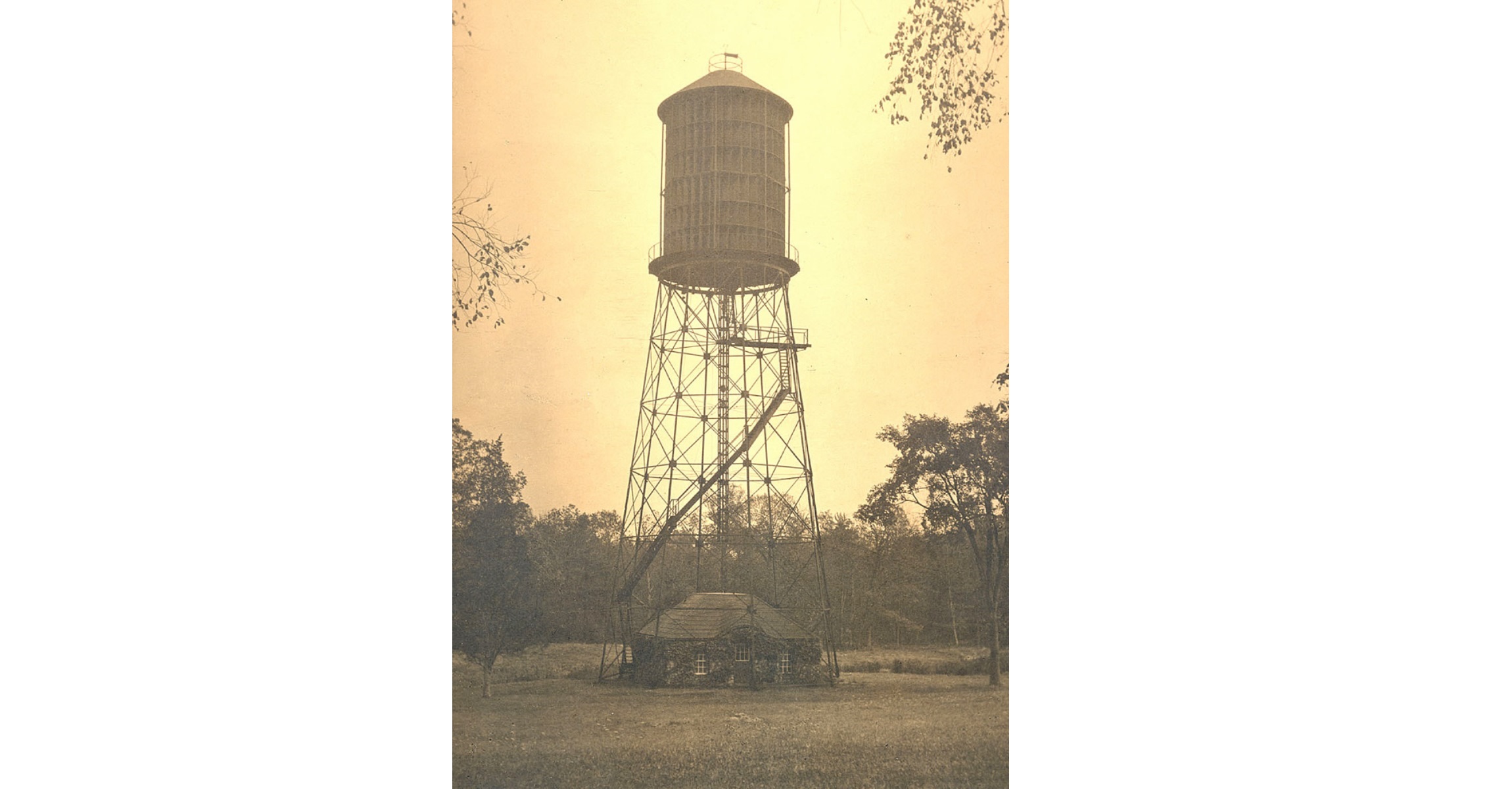
Swedish immigrant Manning Johnson worked as the landscape gardener on the estate from 1904-1917. One of his many responsibilities was to maintain the windmill and power system. His son Paul grew up on the estate and loved to follow his dad as he worked:
He would check [the windmill] twice a day to change instrument charts and to see that everything was working fine. The wind would usually handle the generating of electricity and the pumping of water, but in calm weather, Dad would start the huge gas engine to supplement the wind…The engine could be heard half a mile away. The mill would pump water and charge the batteries in the basement of the big house. At one time, it supplied the electricity needed for all purposes. (One Man’s Story, by Paul Johnson, 1991)
Wind Power at the Eustis Estate
The History of a Unique Technology at the Turn of the Twentieth CenturyPowering the Eustis Estate
Electricity from Wind PowerHidden Decorative Paint
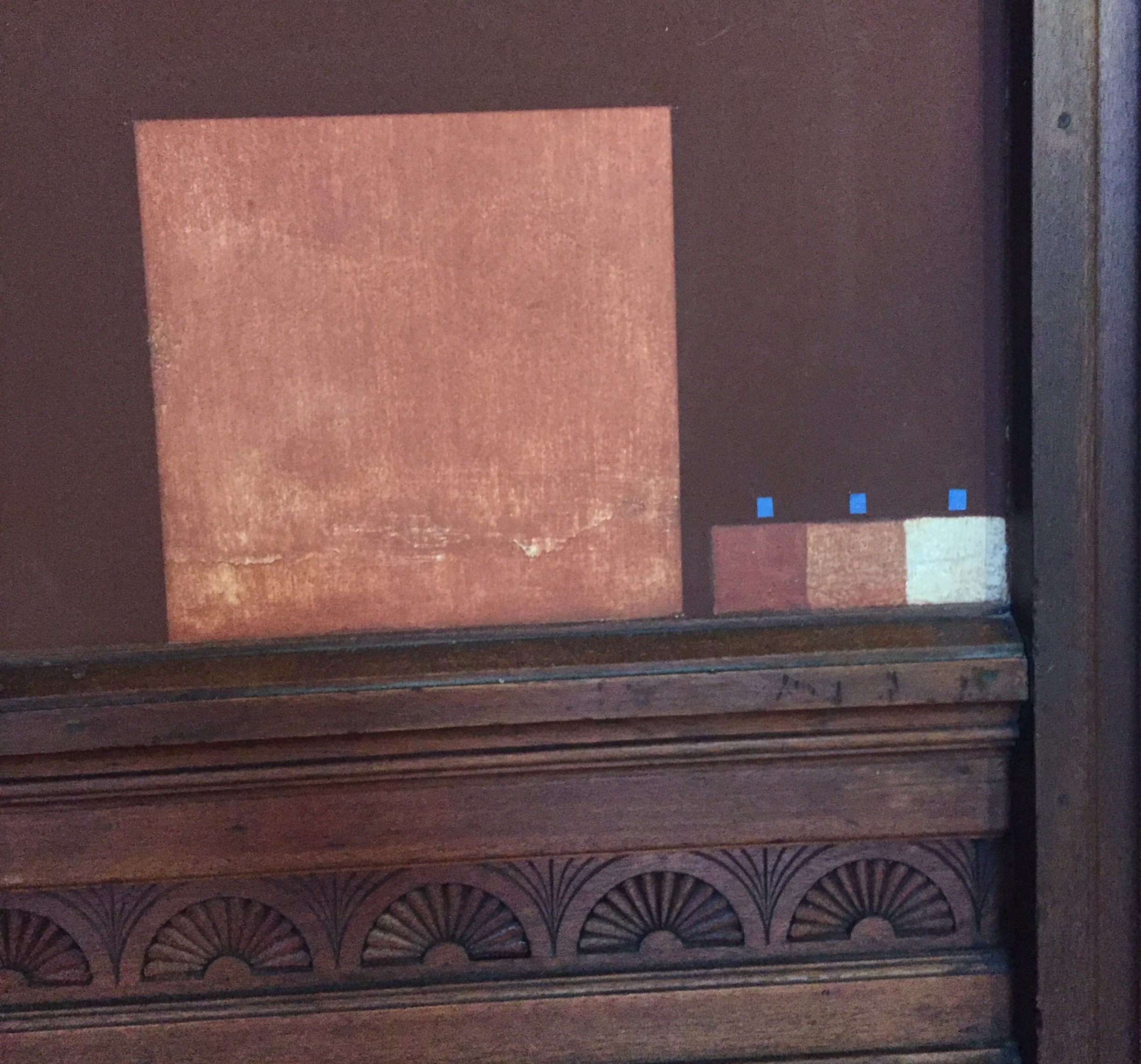 When Historic New England conducted microscopic paint analysis in the library, we discovered an original paint color much lighter than what is currently here. We also found that the ceiling and gable ends were a light olive green color. Historic New England plans to complete paint restoration in this room in the future, but for now, paint samples on the walls present the room’s original colors and give a hint of its past appearance.
When Historic New England conducted microscopic paint analysis in the library, we discovered an original paint color much lighter than what is currently here. We also found that the ceiling and gable ends were a light olive green color. Historic New England plans to complete paint restoration in this room in the future, but for now, paint samples on the walls present the room’s original colors and give a hint of its past appearance.
The small squares reveal the wall colors during different periods. The white is the base plaster. The mottled orange is the treatment chosen by W.E.C. and Edith Eustis. The dark red and the current room color were both chosen by later generations.
